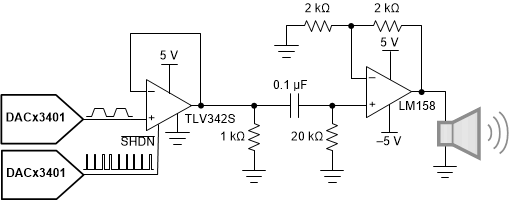ZHCSK27A July 2019 – December 2019 DAC43401 , DAC53401
PRODUCTION DATA.
- 1 特性
- 2 应用
- 3 说明
- 4 修订历史记录
- 5 Device Comparison Table
- 6 Pin Configuration and Functions
-
7 Specifications
- 7.1 Absolute Maximum Ratings
- 7.2 ESD Ratings
- 7.3 Recommended Operating Conditions
- 7.4 Thermal Information
- 7.5 Electrical Characteristics
- 7.6 Timing Requirements: I2CTM Standard mode
- 7.7 Timing Requirements: I2CTM Fast mode
- 7.8 Timing Requirements: I2CTM Fast+ mode
- 7.9 Typical Characteristics: VDD = 1.8 V (Reference = VDD) or VDD = 2 V (Internal Reference)
- 7.10 Typical Characteristics: VDD = 5.5 V (Reference = VDD) or VDD = 5 V (Internal Reference)
- 7.11 Typical Characteristics
-
8 Detailed Description
- 8.1 Overview
- 8.2 Functional Block Diagram
- 8.3 Feature Description
- 8.4 Device Functional Modes
- 8.5 Programming
- 8.6
Register Map
- 8.6.1 STATUS Register (address = D0h) (reset = 000Ch or 0014h)
- 8.6.2 GENERAL_CONFIG Register (address = D1h) (reset = 01F0h)
- 8.6.3 MED_ALARM_CONFIG Register (address = D2h) (reset = 0000h)
- 8.6.4 TRIGGER Register (address = D3h) (reset = 0008h)
- 8.6.5 DAC_DATA Register (address = 21h) (reset = 0000h)
- 8.6.6 DAC_MARGIN_HIGH Register (address = 25h) (reset = 0000h)
- 8.6.7 DAC_MARGIN_LOW Register (address = 26h) (reset = 0000h)
- 8.6.8 PMBUS_OPERATION Register (address = 01h) (reset = 0000h)
- 8.6.9 PMBUS_STATUS_BYTE Register (address = 78h) (reset = 0000h)
- 8.6.10 PMBUS_VERSION Register (address = 98h) (reset = 2200h)
- 9 Application and Implementation
- 10Power Supply Recommendations
- 11Layout
- 12器件和文档支持
- 13机械、封装和可订购信息
9.2.3 Medical Alarm Generation
All medical devices implementing an alarm system shall comply to IEC60601-1-8 standard for medical alarms (as per IEC60601-1 Ed 3.1). The regulatory tests are done at a system level; therefore, system level acoustics play a major role in the compliance. A medical alarm is a common functional block in many medical devices. A portable implementation is needed that can also be customized to fit mechanical and audio or acoustic requirements. The DACx3401-based design is aimed at providing a programmable, standalone, and robust implementation at a very low cost.
There are three types of alarms with different timing requirements: low priority, medium priority, and high priority. Usually, for easy identification, different timings are employed for different equipment. Medical device manufacturers prefer using their signature melodies within the limits of the standard.
 Figure 70. Medical Alarm
Figure 70. Medical Alarm